Wolfram Function Repository
Instant-use add-on functions for the Wolfram Language
Function Repository Resource:
Generate a complete binary search tree of positive fractions
ResourceFunction["SternBrocotTree"][n] generates a complete binary search tree of the positive fractions down to level n. |
Generate a complete binary search tree of the positive fractions down to level 4:
| In[1]:= |
| Out[1]= | 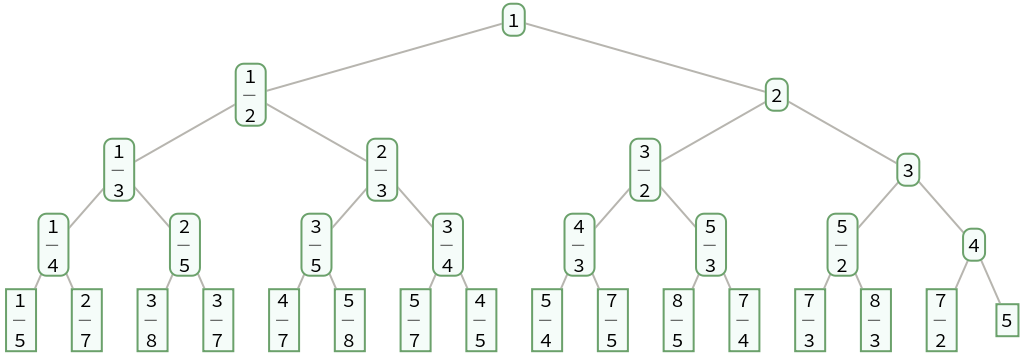 |
Approximate Pi as a rational number with a continued fraction representation with terms totalling 10:
| In[2]:= |
| In[3]:= | ![search[tree_, x_] := Module[{data = TreeData[tree], left, right}, If[TreeLeafQ[tree], data, {left, right} = TreeChildren[tree]; Switch[NumericalOrder[data, x], 1, search[right, x], -1, search[left, x], 0, data]]]](https://www.wolframcloud.com/obj/resourcesystem/images/774/774b7449-a9df-49a9-b412-0671961e94bc/4b75be5db3570019.png) |
| In[4]:= |
| Out[4]= |
| In[5]:= |
| Out[5]= |
FareySequence[n] gives the list of fractions in SternBrocotTree[n-1] between 0 and 1 with denominators not exceeding n:
| In[6]:= |
| Out[6]= |
| In[7]:= |
| Out[7]= | 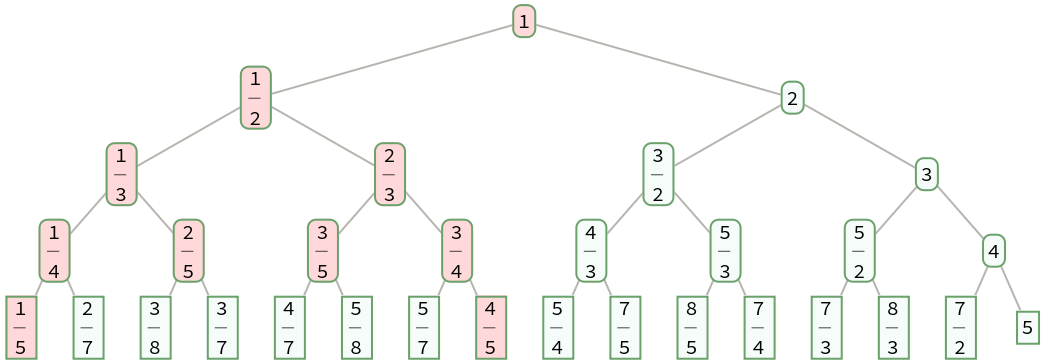 |
SternBrocotTree gives a sorted binary tree, also known as a search tree:
| In[8]:= |
| In[9]:= |
| Out[9]= | 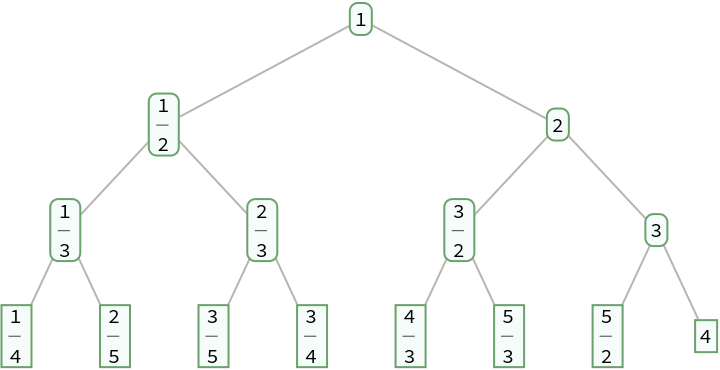 |
| In[10]:= |
| Out[10]= |
A fraction with a continued fraction representation {a1,…,ak} has children with continued fraction representations {a1,…,ak-1,2} and {a1,…,ak+1}:
| In[11]:= |
| Out[11]= | 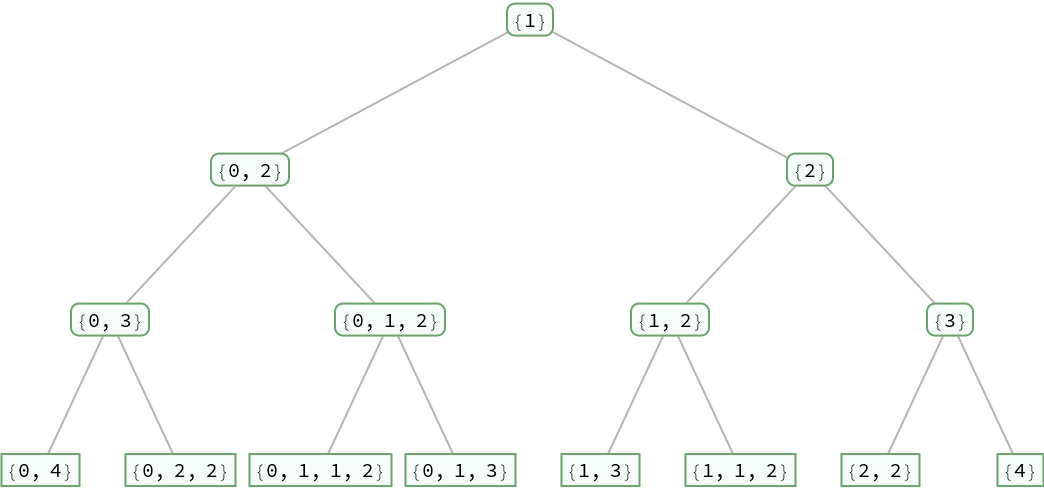 |
| In[12]:= |
| Out[12]= |
The fractions on level d are those for which the total of the terms in its continued fraction representation is d+1:
| In[13]:= |
| Out[13]= | 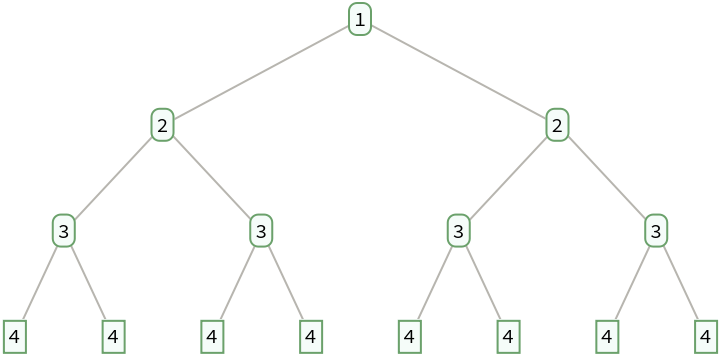 |
The fractions given by SternBrocotTree can be obtained by successively taking the sums of the numerators and denominators of consecutive pairs of fractions starting with 0 and Infinity:
| In[14]:= |
| Out[14]= | 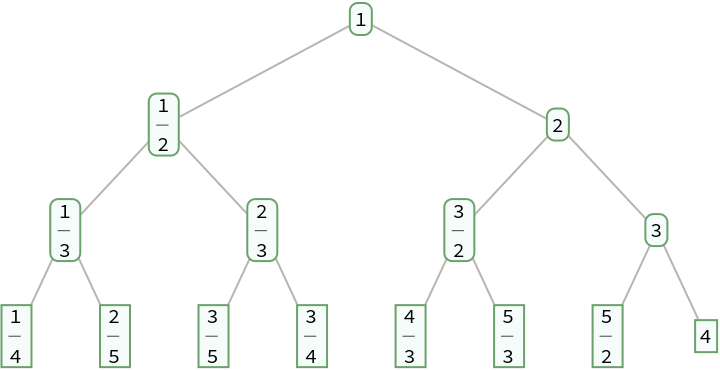 |
| In[15]:= |
| In[16]:= |
| In[17]:= |
| Out[17]= |
| In[18]:= |
| Out[18]= |
| In[19]:= |
| Out[19]= |
| In[20]:= |
| Out[20]= |
| In[21]:= |
| Out[21]= |
The convergents of a positive fraction are a subset of its ancestors in the Stern-Brocot tree:
| In[22]:= |
| Out[22]= |
| In[23]:= |
| Out[23]= | 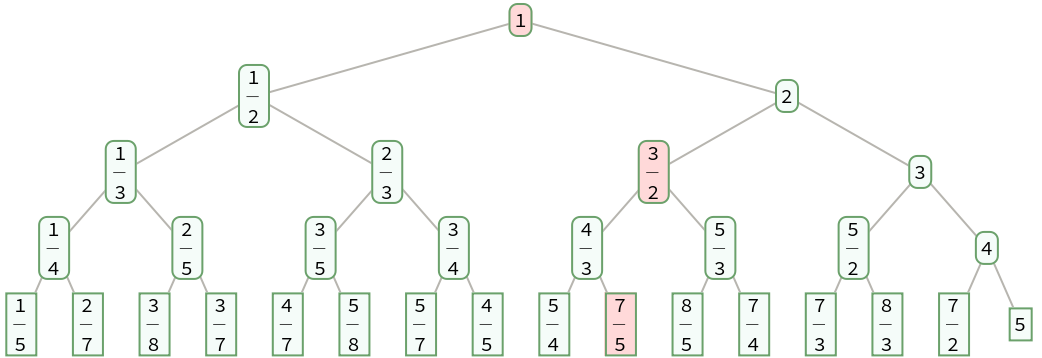 |
| In[24]:= |
| Out[24]= |
If ![]() ,
, ![]() , …,
, …, ![]() are the fractions at level d, then
are the fractions at level d, then  :
:
| In[25]:= |
| Out[25]= | 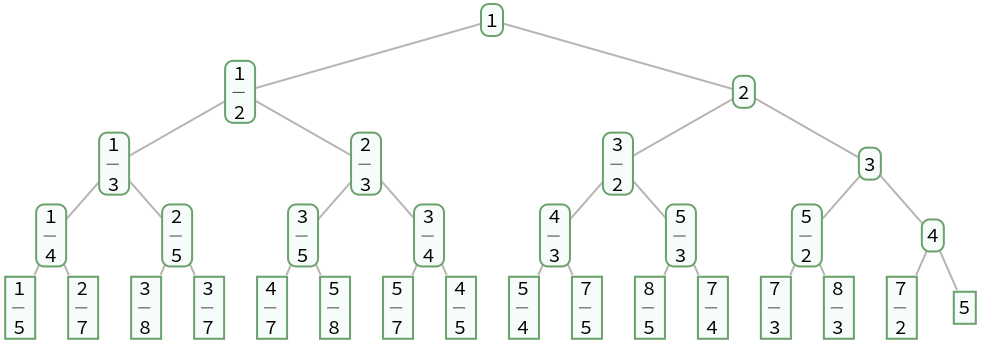 |
| In[26]:= |
| Out[26]= |
| In[27]:= |
| Out[27]= |
Define a function that permutes the positions on level d by reversing the corresponding binary integers with d digits:
| In[28]:= |
Permute the fractions on each level of a Stern-Brocot tree:
| In[29]:= |
| In[30]:= |
| Out[30]= | 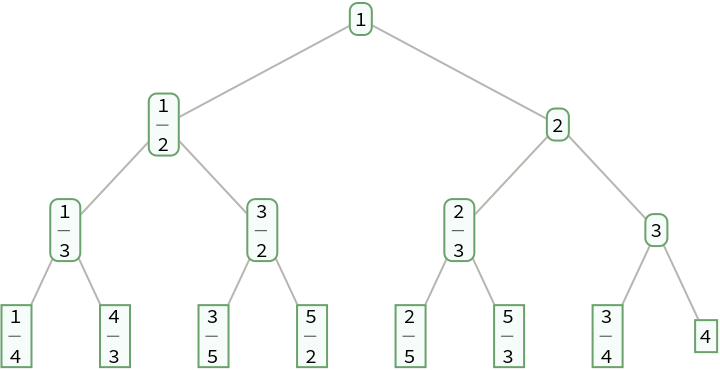 |
The result is a Calkin-Wilf tree:
| In[31]:= |
| Out[32]= |
This work is licensed under a Creative Commons Attribution 4.0 International License